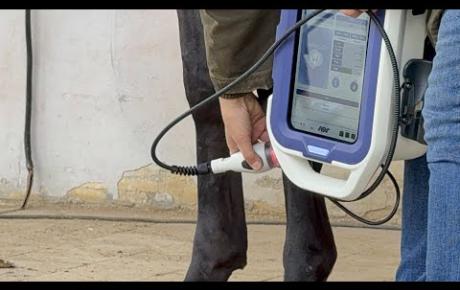The phenomenon of pain is something that humans have long experienced since the beginning of time. Pain helps us perceive harmful stimuli, damage, and disease, and without the ability to sense it, our ability to survive wouldn’t be as evolved as it is in the present day.
Lucky for us, we live in an age where pain is more treatable than ever before. But how adequate our methods for treating and managing pain are highly questionable.

Chronic pain affects over 100 million people in the United States alone, according to a 2011 report by the Institute of Medicine, and that number is likely higher today.
It was this same statistic that formed the backdrop for Judy Foreman’s 2014 book, A Nation in Pain (even though it was her own battle with chronic pain that propelled her to investigate the problem).
The chronic pain crisis isn’t just occurring in the United States, either. A reported 1.5 billion people around the world suffer from chronic pain.
So, how is chronic pain so rampant in the age of modern medicine?
Since its publication, A Nation in Pain has garnered critical acclaim for its exploration of this very question. We’ll delve into the first chapter of Foreman’s investigation, which sets the reader up to understand why chronic pain has manifested into the health crisis that it is today.
What is Chronic Pain?
Judy Foreman wastes no time jumping into the severity of the problem. After describing her experiences battling chronic pain, it’s here that we learn that around 47% of American adults live in chronic pain (p.3).
But what exactly constitutes as chronic pain?
When we initially experience the unpleasant sensation of pain, we can usually pinpoint its location in an instant. We then attempt to describe it, often with verbs and adjectives like, “burning”, or “sore”, or “jolting”. To describe its severity, we tend to use a scale of 0-10, with 10 describing excruciating, unbearable pain.
A lot of pain is short-term and signals to our brain of immediate harm, like when we break a bone or cut or burn ourselves. This kind of pain, which we diagnose as acute pain, can last for as long as a few weeks to a couple of months in more severe cases.
But some pain is not always obvious and can last for longer periods of time. Pain that persists for longer than 3 months is usually diagnosed as chronic pain. Chronic pain tends to indicate that something is wrong internally as a result of a disease or a neurological condition. It can also arise as the result of a severe injury that’s unresponsive to surgery or physical therapy.
Unfortunately, many diseases and conditions that cause chronic pain are not easily treatable. To help patients cope with chronic pain, doctors will often prescribe opioid painkillers. Judy Foreman explores prescription painkillers later on in her book, which we’ll get into for our next blog post.
Let’s continue to explore the severity of the chronic pain crisis through the lens that Judy Foreman provides in A Nation in Pain.
Can Your Chronic Pain Patients Benefit from MLS® Laser Therapy?
How Big the Problem Really Is:
If the fact that over 100 million Americans suffer from chronic pain isn’t staggering enough, the amount of money lost due to chronic pain may come as a bigger shock.
In the first chapter of A Nation in Pain, Foreman draws on a study conducted by health economists from Johns Hopkins Bloomberg School of Public Health and George Washington University. Their research found that chronic pain accounts for up to $635 billion in lost revenue and productivity annually (p.11).
Chronic Pain Accounts for up to $635 billion in lost revenue:
- $261 to $300 billion for those experiencing “persistent” pain (excluding soldiers, prisoners, children, and nursing home residents.)
- $11.6 to $12.7 billion for missed work days.
- $95.2 to $96.5 billion for lost work hours.
- $190.6 to $226.3 billion for chronic pain sufferers forced to work part-time or for lower wages.
According to Foreman, calculating these costs gets tricky. For one thing, the research that Foreman draws up only takes adults aged 24 to 65 into consideration. The research does not account for those who are forced to miss work to take care of relatives suffering from chronic pain.
If that’s not enough, those suffering from moderate chronic pain spend – on average – more than $4,500 in healthcare costs compared to those who don’t suffer from pain at all. More so, those suffering from severe chronic pain spend $3,200 more than those with mild chronic pain (p.11).
Chronic pain doesn’t just hinder people’s quality of life. It’s a problem that costs the United States billions of dollars each year. If pain management were more adequate, sufferers would not only find longer lasting relief but would likely experience a better quality of life with money-associated stress taken out of the picture.
Why Doctors Don't Fully Understand Chronic Pain
Foreman’s research is not all study-based. She interviews a number of chronic pain patients and tells their stories throughout A Nation in Pain, making unknowing readers more empathetic to pain sufferers beyond cold statistics.
She points out that doctors, in particular, often misunderstand the pain that their patients endure. Unless a doctor has experienced chronic pain for themselves, they often can’t fathom chronic pain and empathize with their patients. To top it all off, American doctors are not adequately trained in pain treatment and management. Foreman interviews almost 200 doctors and scientists on the subject and later discovers that the problem extends beyond American borders.
For one thing, medical schools barely teach pain. Medical students in the U.S spend – on average – only 13 to 41 hours studying pain. Additionally, pain is not even taught to medical students across 80% of the world, and only 3,000 to 4,000 American doctors specialize in pain treatment (p.7). That’s nowhere near enough doctors to treat the millions who suffer from debilitating chronic pain.
Based on Foreman’s research, it seems that doctors hit a plateau when it comes to treating pain. The traditional model for how the medical community treats pain is not only outdated. It’s insufficient for treating the kinds of pain that arise from the myriad of chronic diseases and conditions, such as arthritis, multiple sclerosis, and inflammation.
Lack of Funding for Adequate Research
What exactly makes the medical model for pain treatment and management so inadequate?
It’s not necessarily due to our medical education and training per se. After all, the United States is world-renowned for its medical universities, hospitals, and doctors. Medical students from all over the world move to the United States to study medicine. In fact, 28% of U.S doctors are immigrants (though this figure is in decline compared to recent years).
Our country’s lack of understanding of pain management largely boils down to funding. The National Institutes of Health (NIH), an agency part of the U.S Department of Health and Human Services, only spends 1.1% of its annual budget on pain research (p.12), or $358 million of a $30.8 billion budget.
Several institutions make up the NIH and are all geared towards an array of diseases and conditions. Of all these institutes, not one is dedicated to pain itself. This means that the little money that the NIH actually does spend on pain research gets spread thin across all its institutes.
Due to this serious lack of funding, doctors will resort to research conducted by pharmaceutical companies. While their research is viable to an extent, pharmaceutical companies present a conflict of interest when it comes to researching pain.
Understanding the Pain Management Problem
The first chapter of Judy Foreman’s A Nation in Pain not only reveals that chronic pain is a costly health crisis that has affected over 100 million Americans in the last few years. We also learn that the medical model for pain management and treatment is still grossly inadequate even in the age of modern medicine.
Despite this, there are still benefits to the way we currently treat chronic pain. Chronic pain sufferers can often experience relief with prescription opioids, which are usually the go-to form of treatment. However, prescription opioids have proven insufficient in comparison to the magnitude of chronic pain. They only provide short-term relief. Not to mention, they’re highly addictive, and it’s often for these reasons that some chronic pain sufferers go on to abuse their prescription painkillers.
In our next blog post, we’ll explore chapters 7 and 8 of A Nation in Pain, which explores prescription painkillers and their correlation to the chronic pain crisis. Stay tuned!
Citations
Foreman, J. (2014). The Enormity of the Problem. A Nation in Pain (pp.1-17). New York, NY: Oxford University Press.


